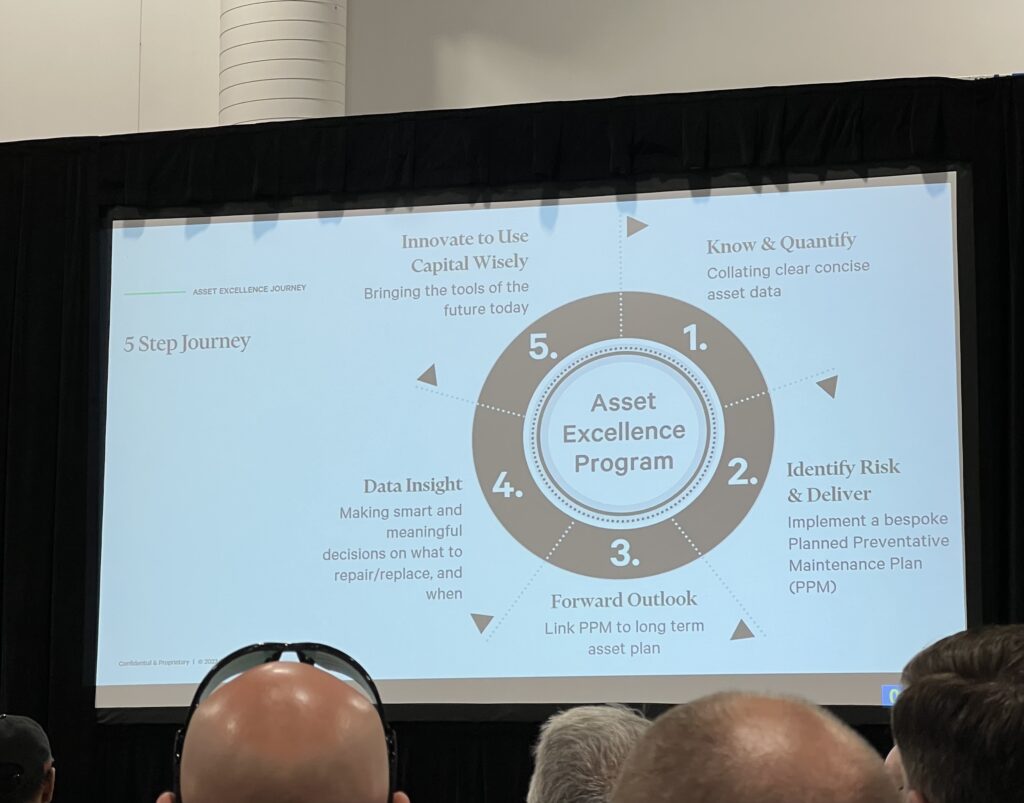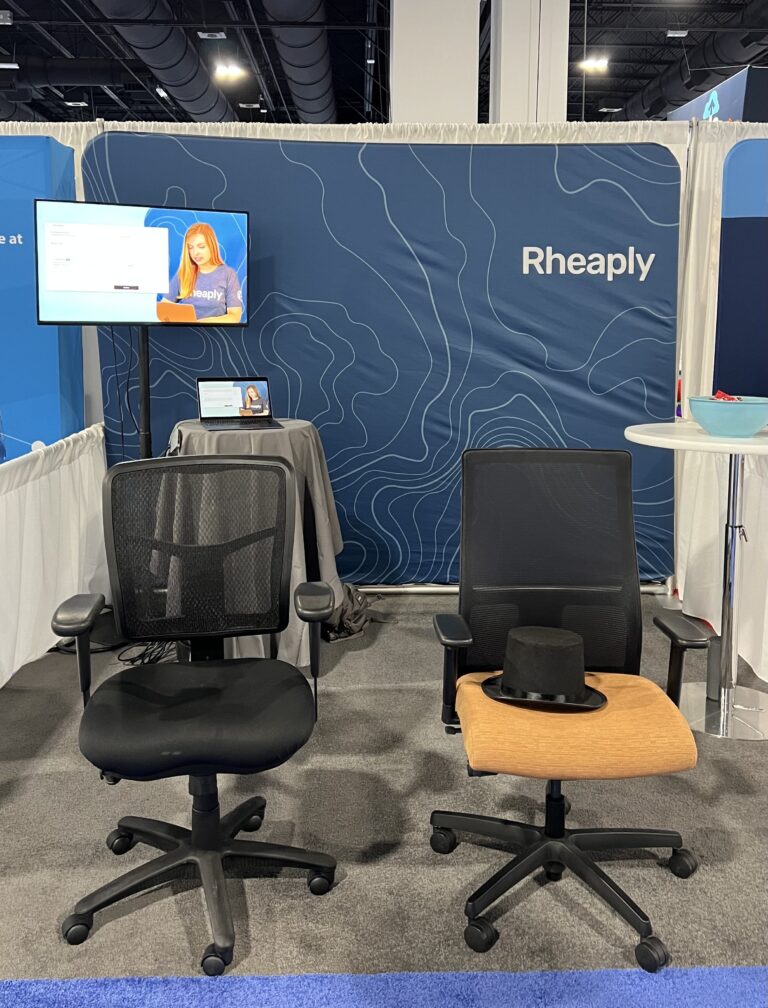Walk down the rows of exhibitors at the IFMA World Workplace conference and it’s apparent just how many issues face facilities management today. From safety (do you know what communication system is installed in your elevators?) to employee satisfaction (should you get a fancy coffee or flavored water machine?) and even to bird control (yes), there are so many competing issues and priorities fighting for the top spot in the hearts and minds of facilities management leaders. So, where does asset management fit into the mix and, more pressingly, where does sustainability? For us at Rheaply, we’re of the opinion that incorporating reuse into your business practices can address some of these challenges, and we weren’t the only ones at IFMA to hold this sentiment.
IFMA World Workplace recap
The folks at CBRE identified that the biggest trends in facilities management (FM) are cost certainty, operational efficiency, sustainability, data-at-scale, and balancing priorities. They hosted a compelling session about the importance of the asset excellence journey. “Asset Excellence” extends life expectancy, decreases failures, and reduces costs. Assets performing at peak efficiency consume less energy and with lower carbon emissions.
Not knowing every detail of the items, assets, and materials under your purview can be a huge risk for your business, employees, and anyone else who comes into your physical space, which is why the first step in CBRE’s asset excellence program is Know and Quantify. This degree of inventory management includes asset tagging – time consuming and tedious work, but imperative. By operationalizing asset data, organizations can have a Forward Outlook (CBRE’s third step) and strategically plan when to repair or replace their assets.

Now, we recognize that there’s the perception that repaired or refurbished items are poorer quality. Or, to put it in the words of one of our booth visitors, “grungy and worn down.” But time after time, we proved this wrong when asking our booth visitors to guess which of 2 task chairs was brand new and which was reused.

Most people assumed that the “more comfortable” and “attractive” chair (as they so freely shared with us) was the new chair — when in fact the chair they preferred was actually refurbished!
Our message that “reused and refurbished is also great” complemented Planon’s session about hybrid work and the changing facilities management and corporate real estate landscape. Given that the demand for physical office space has diminished, there’s an opportunity to understand how spaces are being used so that they can be run more efficiently. The Planon team doubled down on the importance of repurposing what you already have, which could mean that the chairs collecting dust in your storeroom simply need to be remanufactured to restore comfortability. Davies Office had an incredible activation that showed the circular economy in motion, featuring their remanufactured task chairs and workstations:
In addition to our shared obsession with lumbar support, most of the attendees we met at IFMA felt that their organizations were sending too much stuff to landfill. And recognized that there must be a better option, that’s both time and cost effective. Our conversations really centered on how Rheaply’s network of partners including recyclers, refurbishers, remanufacturers, and local community groups can help them with their surplus issues and upcoming decommissions while still keeping valuable assets and materials from meeting a landfill fate.
If we met you at IFMA, drop us a note so we can continue our conversation! Email Andrew here.

